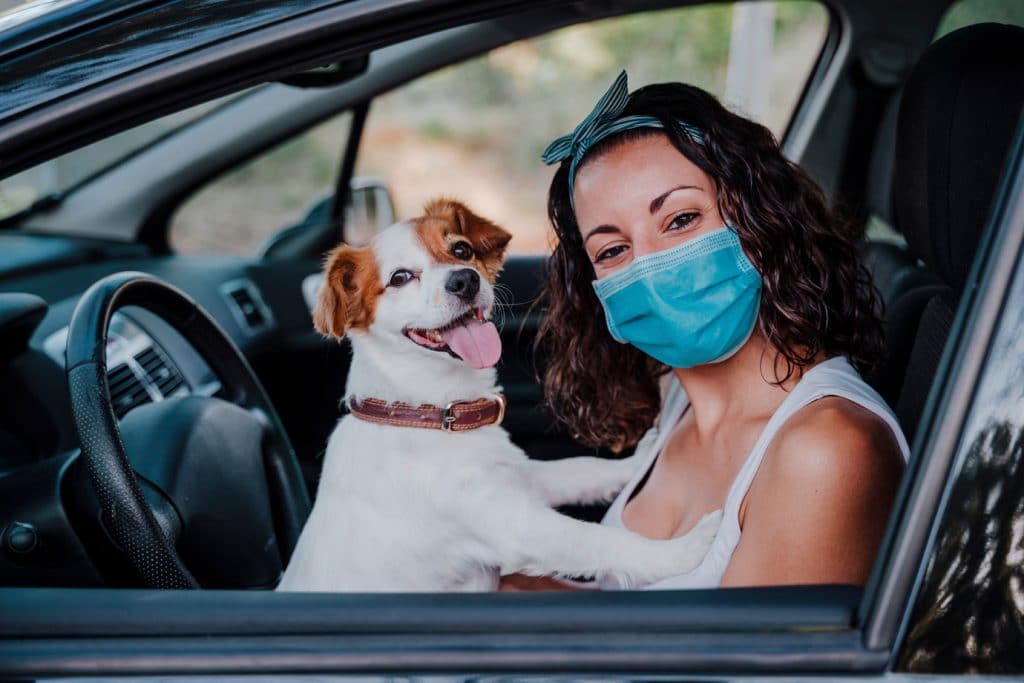Being able to enjoy a day outdoors after such a long isolation is the wish of many families, and pets are part of our family. Follow these tips to have a safe trip and have a great time with your dog or cat away from home.
With the arrival of spring and the relaxation of the quarantine, going out for a drive or traveling to a park to enjoy the sunny days is becoming commonplace in this new normality that we are learning to live in.
Let us remember that if we decide to leave home, we must do so taking all health precautions to avoid contagion. Although there are fewer restrictions, this does not mean that the chances of contracting the Covid-19 virus have decreased.
Being able to enjoy a day outdoors after such a long isolation is the desire of many families, and pets are part of our family. That is why we must also take all the necessary precautions so that they can travel in the safest way and reduce risks as much as possible.
It should be clarified that although from the legal point of view, the National Traffic Law 24.449 only states in its article 48, paragraph q: “that no load or element that disturbs visibility or exceeds the allowed limits must be transported”; the provinces do regulate this issue. Such is the case in the province of Buenos Aires through article 64, paragraph 4, of law 13.637, which states: “no driver may carry animals in the front seat” and clarifies that “they must be transported in the back seat and tied with straps so that they cannot jump to the front seat”.
In order to meet the requirements of the regulations, there are various types of products on the market for transporting both dogs and cats, which are attached to the original passenger seat belt system or to the seat fastening bolts.
These include the following items:
- Single hitch harness
- Harness with two hitches
- Dividing grid
- Cat carrier
- Kennel
Step by step:
- If it is the first time that the pet is taken by car, we must begin by making short tests so that the animal gets used to it, does not get dizzy or nervous. These “micro-trips” should be done varying the speed of the car and going to places that the dog or cat enjoys going to, such as a square or a park. If they are not accustomed gradually, especially as children, they will not have a very good time when we want to make a longer trip.
- To get the cat used to the carrier, “before traveling, it is important to leave it open and at its disposal within its territory,” says Hernán Pesis, educator and feline behaviorist in the newspaper La Nación; then, hang a ball of sisal yarn from the hole in the car door and, through play, generate positive associations. This way, habituation is faster. When he is inside and comfortable, we can try closing the door.
- If the trip is planned, it is advisable for the animal to fast for at least six hours to avoid vomiting and dizziness in the cabin. Also, before starting the trip, it is recommended that they take a walk so that they can relieve themselves.
- For long journeys we have to equip ourselves a little more. First of all, we must provide them with the same food they are consuming, but in less quantity so that they do not suffer gastrointestinal problems. We must also include water, bags and cleaning elements, in addition to scheduling stops for them to drink, walk and relieve themselves. In the case of carrying a cat, make sure it is comfortable and has water available in the carrier.
- Always remember that the animals must be placed in the back seat, on a blanket and -as we have detailed- secured with safety accessories, so that they do not move in the event of sudden braking.
- The passenger compartment of the vehicle must have an adequate temperature and if the pets are anxious, it is advisable to pet them and talk to them to reduce their anxiety. Cats should always travel in a carrier, with a familiar object and an absorbent blanket to prevent them from getting wet in case they urinate. The carrier should be fixed to the seat belt so that it does not move.



